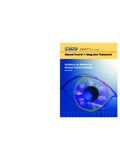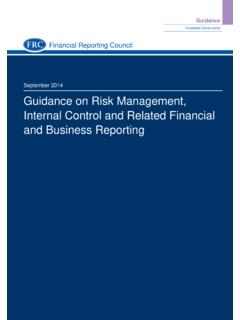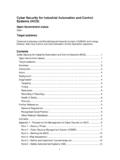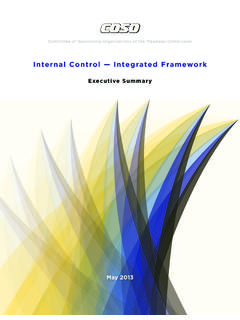Transcription of Temperature and humidity monitoring systems for transport ...
1 ` Supplement 15 WHO Vaccine Temperature and humidity monitoring systems for transport operations Technical supplement to WHO Technical Report Series, No. 961, 2011 Annex 9: Model guidance for the storage and transport of time and Temperature sensitive pharmaceutical products August 2014 World Health Organization 2014 WHO Press, World Health Organization, 20 Avenue Appia, 1211 Geneva 27, Switzerland (tel.: +41 22 791 3264; fax: +41 22 791 4857; e-mail: Requests for permission to reproduce or translate WHO publications whether for sale or for noncommercial distribution should be addressed to WHO Press, at the above address (fax: +41 22 791 4806; e-mail: The designations employed and the presentation of the material in this publication do not imply the expression of any opinion whatsoever on the part of the World Health Organization concerning the legal status of any country, territory, city or area or of its authorities, or concerning the delimitation of its frontiers or boundaries.))
2 Dotted lines on maps represent approximate border lines for which there may not yet be full agreement. The mention of specific companies or of certain manufacturers products does not imply that they are endorsed or recommended by the World Health Organization in preference to others of a similar nature that are not mentioned. Errors and omissions excepted, the names of proprietary products are distinguished by initial capital letters. All reasonable precautions have been taken by the World Health Organization to verify the information contained in this publication. However, the published material is being distributed without warranty of any kind, either expressed or implied. The responsibility for the interpretation and use of the material lies with the reader.
3 In no event shall the World ` Health Organization be liable for damages arising from its use. The named authors alone are responsible for the views expressed in this publication. Technical Supplement: Temperature and humidity monitoring systems for transport operations 1 Acknowledgments The authors of this document are Kevin O Donnell, Exelsius Cold Chain Management Consultancy and member of the United States Pharmacopeia Expert Committee on Packaging, Storage & Distribution 2010-2015 cycle, Patrick McGrath, Berlinger USA, Dr Umit Kartoglu, WHO Geneva, and Denis Maire, WHO Geneva. Technical Supplement: Temperature and humidity monitoring systems for transport operations 2 Contents Acknowledgments.
4 1 Contents .. 2 Abbreviations .. 3 Glossary .. 4 1. Introduction .. 8 Requirements .. 8 9 Target readership .. 9 2. Guidance .. 10 Associated materials and equipment .. 10 Temperature and humidity monitoring devices .. 10 Device types .. 11 Data collection, storage and retrieval .. 15 References .. 16 Revision history .. 17 Technical Supplement: Temperature and humidity monitoring systems for transport operations 3 Abbreviations CI Chemical Indicator ETI Electronic Temperature Integrator EDLM Electronic Data Logging Monitor IATA International Air transport Association NIST National Institute of Standards and Technology (USA) PDA Parenteral Drug Association TTI Time- Temperature Integrator TTSPP Time- and Temperature -Sensitive Pharmaceutical Product URS User Requirements Specification Technical Supplement: Temperature and humidity monitoring systems for transport operations 4 Glossary 3PL: Third party logistics provider.
5 A firm that provides service to its customers of outsourced (or "third party") logistics services for part, or all of their supply chain management functions. 4PL: Fourth party logistics provider: a general contractor who manages other 3 PLs, truckers, forwarders, custom house agents, and others, essentially taking responsibility for a complete logistics process for the customer. Ancillary packaging components: Packaging elements used to protect the TTSPP and support or enhance performance of the completed package. This may include retainers, dunnage, secondary protective packaging, and Temperature data logging devices. Chemical indicators: (also called markers or phase-change indicators), are generally impregnated onto a paperboard substrate.
6 These indicators, sometimes referred to as critical Temperature indicators, are based on a phase change or chemical reaction that occurs as a function of Temperature . Examples include liquid crystals, waxes, polymers, and lacquers that change phase, and thereby their appearance, as a function of Temperature . Threshold type chemical indicators are irreversible and are suitable for high or low temperatures. Temperature threshold indicators show a response and typically are single-use devices. These indicators provide a signal only when exposed to temperatures higher than (ascending indicator) or lower than (descending indicator) a predetermined threshold Temperature . Progressive type chemical indicators register multiple events in a cumulative way.
7 As long as the device remains below the threshold Temperature no changes occur. However, whenever the threshold Temperature is exceeded the reaction is activated and the indicator starts to change. Further Temperature violations increase the change process. The indicator for this type of device usually takes the form of a progressive colour change along a paper strip. Critical Control Point (CCP): A step or procedure at which controls or checks can be applied to prevent or reduce a hazard or risk to and acceptable or critical level. In the context of distribution and handling of time and Temperature -sensitive healthcare products, critical control points are typically defined for those activities where time and Temperature abuse may occur or where critical processes that can affect the performance of the packaging solution or containment system are at risk.
8 Electronic Data Integrator (EDI): A hybrid electronic instrument intelligently programmed like an Electronic Temperature Indicator (ETI) with the report/data producing capabilities of an Electronic Data Logging Monitor (EDLM) that combines the features and functions of a Go/No-go device with the record retention and data tracking of an EDLM. It uses pre-programmed Temperature threshold intelligence to integrate post-analytic functional steps that are typically performed by trained personnel. Electronic Data Logging Monitor (EDLM): A small portable device that measures and stores Temperature at a pre-determined time intervals by means of an electronic sensor. They have programmable alarm capabilities, integrated displays, and can create reports and graphs which may be permanently stored, shared and analysed via proprietary hardware, software, desktop application or through hosted databases.
9 Electronic Temperature Indicator (ETI): A compact, portable device that measures, Temperature over time by means of a built-in sensor. They come in a wide range of forms, Technical Supplement: Temperature and humidity monitoring systems for transport operations 5 features, configurations, cost and levels of performance. Their composition consists of four basic components: a thermistor sensor, a microprocessor, a memory chip, and power source (lithium battery). Electronic Temperature monitoring and event logger system : system for recording and reporting air and/or product temperatures, with optional facilities for recording and reporting specific events such as door-opening or defrost cycles, and for issuing alarms.
10 Such systems may be user-programmable and may also be remotely monitored via a satellite link. External distribution: transport of TTSPPs through various steps in the customer s supply chain ( transport from a pharmaceutical manufacturer s distribution centre, to commercial customers (including wholesalers, retailers and buying groups), to clinical facilities or direct to the patient). Contrast with internal distribution. humidity (Relative humidity ): The partial pressure of water vapour in air to the vapour pressure of saturated air at a given Temperature . In other words, the relative humidity is the amount of water vapour present, divided by the theoretical amount of moisture that could be held by that volume of air at a given Temperature .















